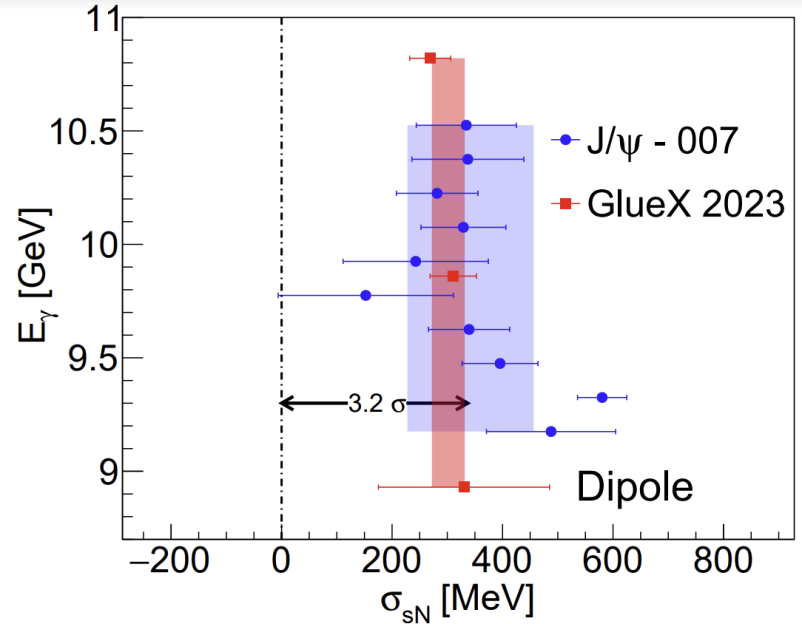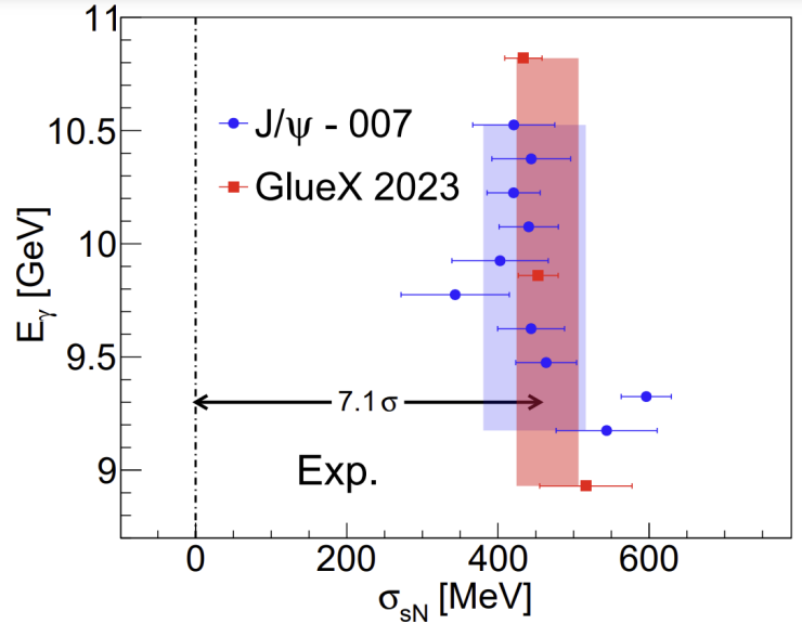Home / News / Latest News
28 02, 2024
Study Provides New Insights into Proton Mass Origins
A recent study led by Prof. CHEN Xurong at the Institute of Modern Physics (IMP) of the Chinese Academy of Sciences (CAS) has provided new insights into the origins of proton mass. From an experimental standpoint, the researchers suggested that the influence of heavy quarks on proton mass could be bigger than anticipated.
The findings were published in Physical Review D on February 27, 2024.
Nucleons, comprising protons and neutrons, contribute to over 99% of the observable mass of the universe. The underlying mechanisms responsible for nucleon mass are intricately linked to phenomena such as quantum trace anomaly, color confinement, and dynamical chiral symmetry breaking. Hence, to probe the origins of nucleon mass is an important and profound research topic in nucleon structure and Quantum Chromodynamics studies.
In previous studies, it has been postulated that the mass of quarks residing within protons predominantly originates from its constituent quarks: two up quarks and one down quark, with the contributions from other quark types considered negligible. Recent investigations have suggested the possible presence of heavier quark species inside protons. Yet, there is no sufficient direct experimental evidence to confirm the substantial impact of heavy quarks (strange quark, charm quark and beauty quark) on proton mass.
By establishing a relationship between the quantum anomaly energy of protons and the total sigma term (including contributions of light and heavy quarks to proton mass), researchers at IMP successfully extracted the sigma term from experimental data with vector meson near threshold photo-production.
The outcomes reveal a larger-than-anticipated sigma term of heavy quarks, approximately 337 MeV (dipole fit) and 455 MeV (exponential fit), constituting 36-48% of the total proton mass (938 MeV). The statistical significance of the non-zero value (exponential fit) reaches approximately 7 standard deviations, equating to a probability of 99.999999999744%.
Moreover, the utilization of data from two experimental groups, with the Kolmogorov–Smirnov test method, affirmed the compatibility of the sigma term extracted from both datasets.
This study offers novel insights for future investigations into the origins of proton mass, and provides new observables for research on the upcoming electron-ion colliders (EICs).
The project received support from the Strategic Priority Research Program of CAS.


Figure. Values of the sigma term of heavy quarks extracted from experiments using dipole form (top) and exponential form (bottom) methods. (Image by KOU Wei)
Appendix(s):



 甘公网安备 62010202000713号
甘公网安备 62010202000713号


